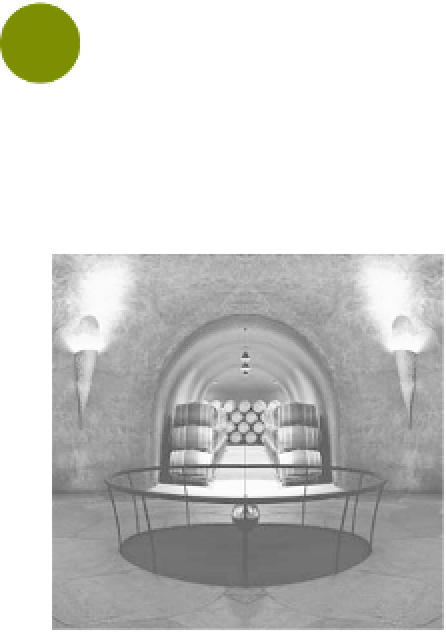Travel Reference
In-Depth Information
West Coast U.S.
272
Stag's Leap Wine Cellars
The Giant Step Forward
Napa Valley, California
In 1976, English wine merchant Stephen
Spurrier decided to conduct a blind tasting
at his wine store in Paris. Intrigued by wines
he'd tasted on a recent trip to California
(dramatized in the 2008 film
Bottle Shock
),
he gathered the best of French and Califor-
nia wine and invited the most prestigious
French critics to taste and rate them. The
results shocked the wine world: American
wines fared well against the French. One
particular bottle came out on top—Stag's
Leap Wine Cellars' Cabernet Sauvignon.
What became known as the “Judgment
of Paris” ended in a flurry of recriminations
and accusations of cheating from the
embarrassed French. No longer could
French wine be presumed to be the
world's best. Upstart California wines had
become a force to be reckoned with.
Even more surprising, the winning Cab-
ernet Sauvignon came from 3-year-old
vines from a 4-year old winery in an area
long deemed unsuitable for growing such
a grape. The winemaker was Warren Win-
iarski, a political science professor from
the University of California. Winiarski hap-
pens to be Polish for “winemaker's son,”
and in the 1960s, he decided to take his
name seriously and learn the trade from
Robert Mondavi (see ). A lover of Cab-
ernet Sauvignon, Winiarski then scoured
California looking for the right terrain. In
1969 he tried a homemade wine from a
particular area in Napa Valley called Stag's
Leap, and he knew at once that he had
found his sweet spot. The rest is history.
Today Stag's Leap Wine Cellars is argu-
ably the most prestigious winery in the
United States. Because Stag's Leap is a
separate valley within Napa Valley, other
wineries have taken the same name hop-
ing to cash in on Winiarski's success. The
The 1976 blind tasting that awakened the world
to California wines rated a Stag's Leap Cab
above its French counterpart.
original Stag's Leap Wine Cellars is easy to
miss, however; look for a large barrel-top
sign sitting in a bed of flowers at its
entrance, on a road known as the Silverado
Trail, 7 miles (11km) north of Napa. The
building is small and unassuming, with
cream-colored walls and arched doorways.
Its low-key tasting room feels somewhat
cramped and dark, but on sunny days they
open the large doors onto a pretty patio,
which brightens the place up enormously.
The tasting includes the winery's lower
bracket wines. To try the good stuff—the
SLV Cabernet Sauvignon that went down
so well in France—you will have to buy the
bottle. The Cask 23 Cabernet Sauvignon is
the very best, produced only in good years
and originally kept in a special barrel num-
bered 23. Recently the winery opened
up its cave complex, a series of austere
domed cellars that lead to a round room
with a fascinating Foucault's pendulum.






